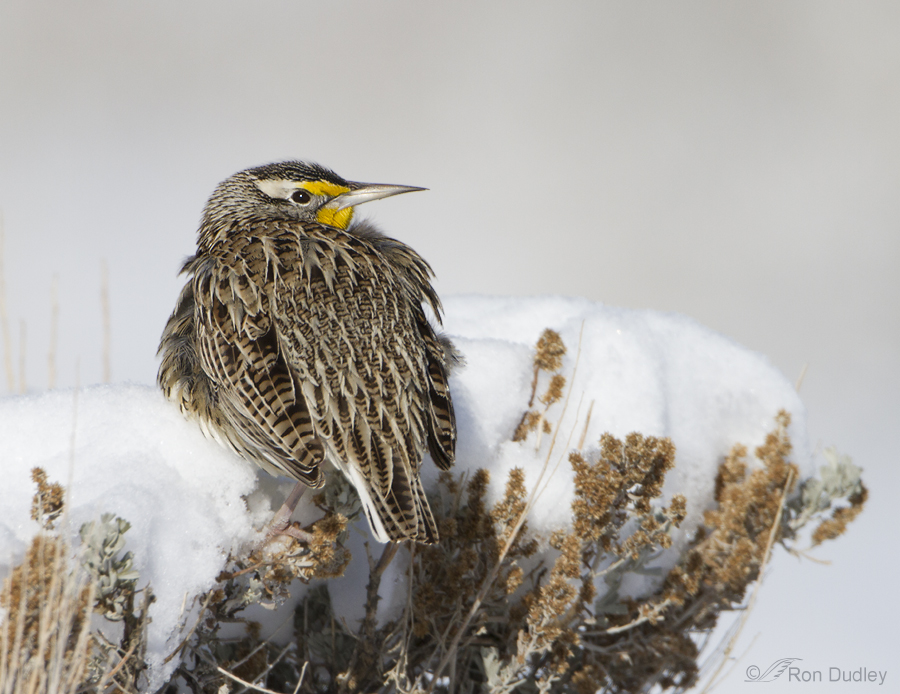I’m used to seeing Western Meadowlarks all winter long. True, their numbers go down as some of them migrate south but there always seems to be a resident population of them here in northern Utah and I typically photograph them year-round. Not so this winter.

1/3200, f/7.1, ISO 500 500 f/4, 1.4 tc, natural light (techs were set for take-off)
This is the last meadowlark I photographed, taken on 28 December, 2012 and it’s been weeks since I’ve even seen one. Though they’re a permanent resident in my area we’re right on the border between their “permanent resident” and “breeding resident” ranges – see map if you’re interested.
I suspect they’ve all vamoosed for warmer climes because of our recent extremes of cold and snow. If that’s the case, this is one more species I’ll add to my list of birds whose return I’ll anticipate as harbingers of spring.
Ron


What a wonderful shot! I just can’t seem to get even a poor one. Thanks for Sharing!
Finally got a photo of one last week! The song was wonderful. Hope yours return soon!
You are right about the Meadowlarks but I did spot a flock of about 50 Horned Larks at the Bear River MBR on Thursday last week. What is the difference between the two regarding permanent and breeding ranges? BTW, I really value your photo/nature online classes (very informative) and look forward to your blog posts.
Dennis, I’ve never heard my posts referred to as “online classes” but I take the reference as a compliment. Thank you.
I’ve been seeing flocks of Horned Larks too. Meadowlarks aren’t actually larks (Horned Larks are) and I wonder if the similar name leads some folks to expect their ranges to be more similar than they are. The year-round range of the Horned Lark extends much further north than does that of the Western Meadowlark. Here’s a range map if you’re interested. http://sdakotabirds.com/species/maps/horned_lark_map.htm
Nice shot. I think western meadowlarks are really pretty.
I agree, Scott.
I really feel for that poor, cold bird. The range map was real helpful, because I now know that the western meadowlark is a permanent resident in my area (El Paso, TX). I’ll have to keep an eye out for them. As always, I appreciate your photos and information.
Thanks, Susan. I’m glad the range map was helpful.
I wonder if they are like some of the other birds that we are seeing farther south due to food supplies. We have Red Breasted Nuthatches for the first time in several years. They have a term for this but can’t think of it now. We are in the Arkansas Ozarks. Enjoy your pictures and information.
Jo
Interesting about the nuthatches, Jo. Perhaps “irruption” is the word you have in mind?